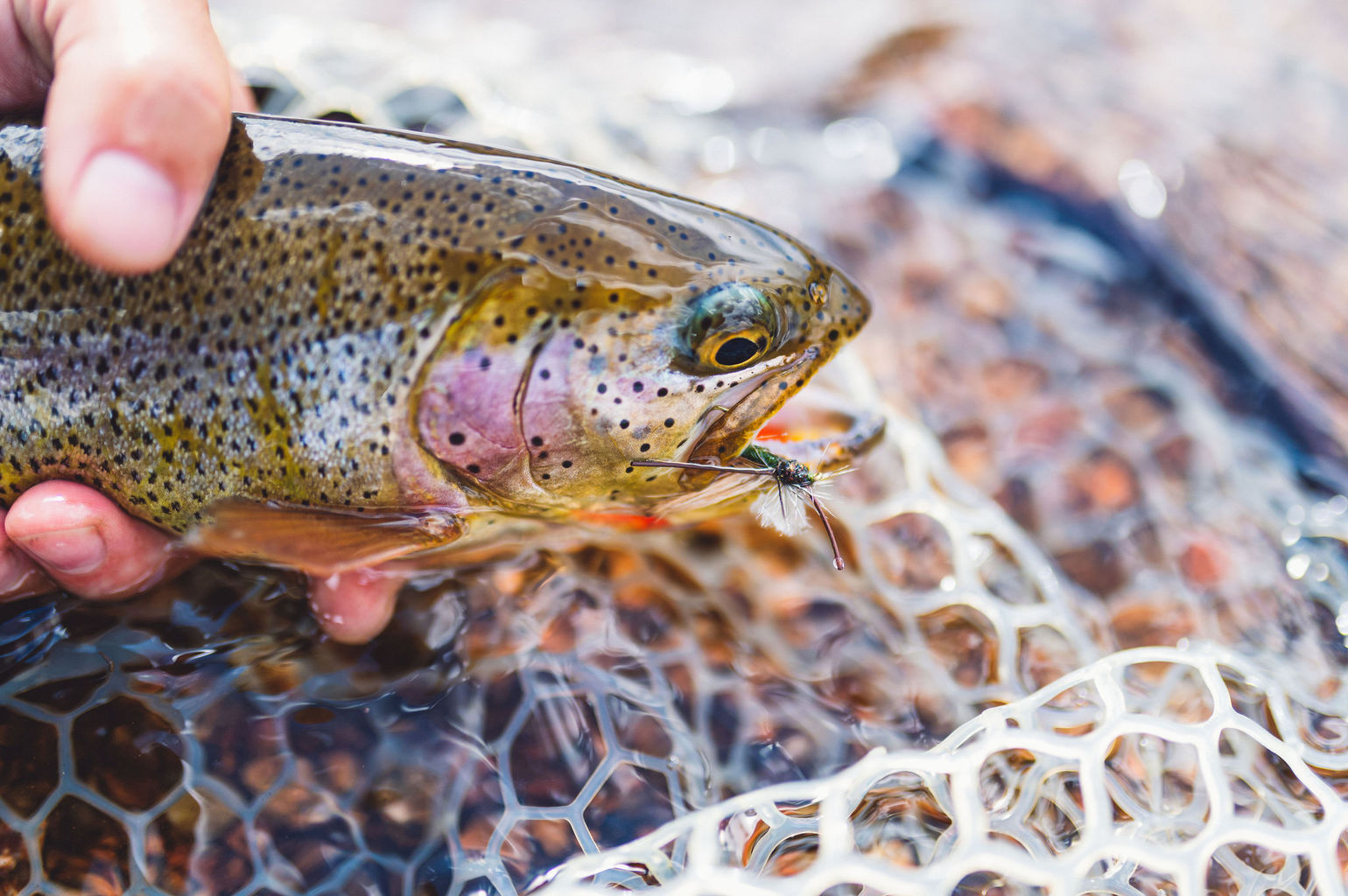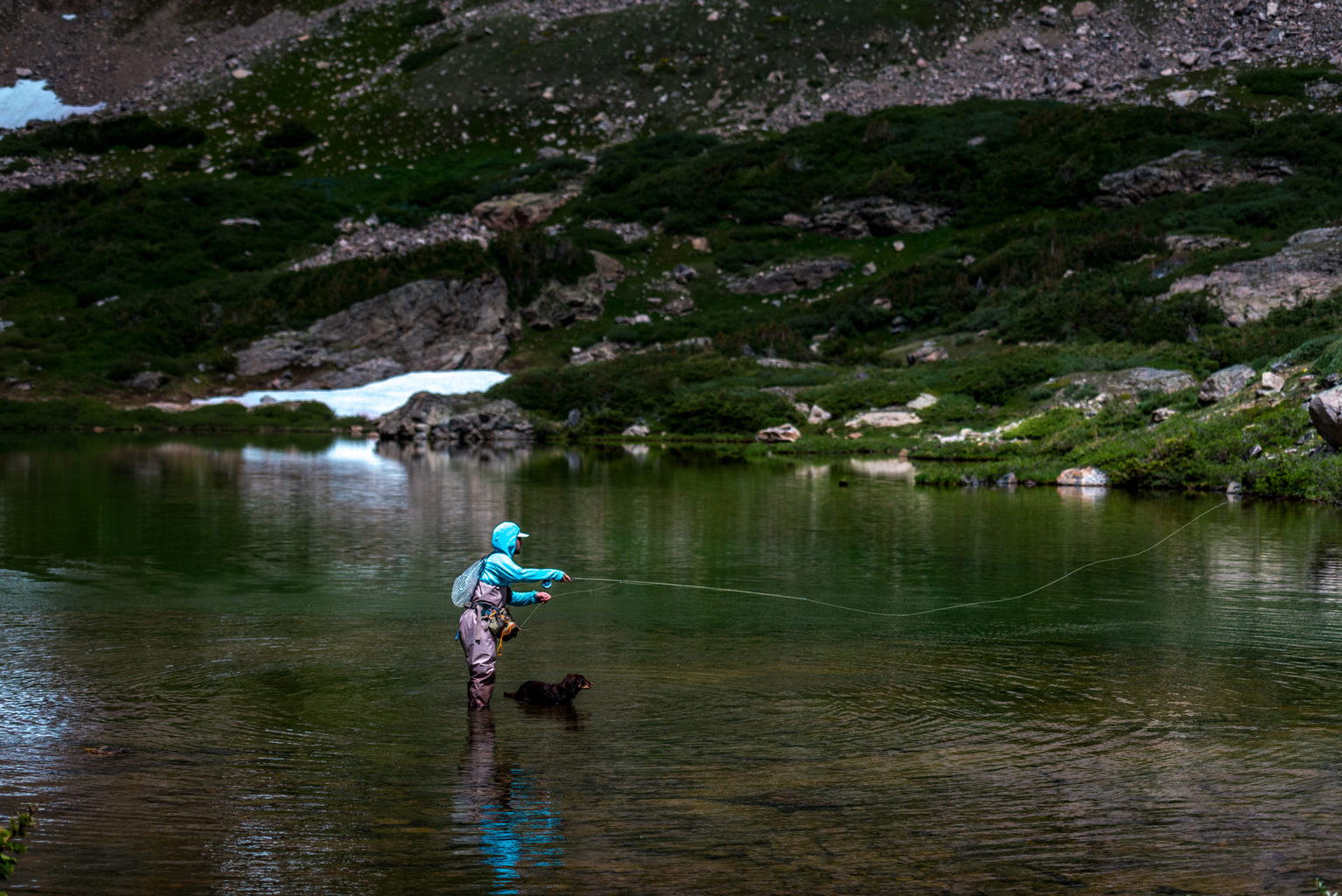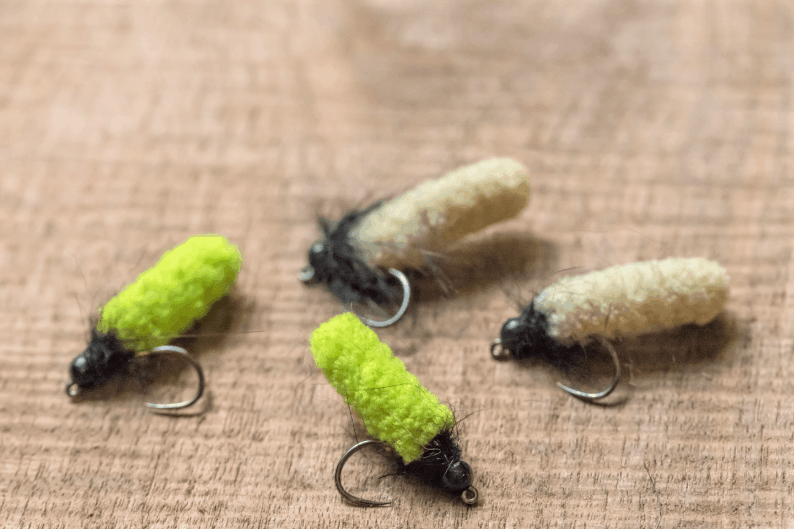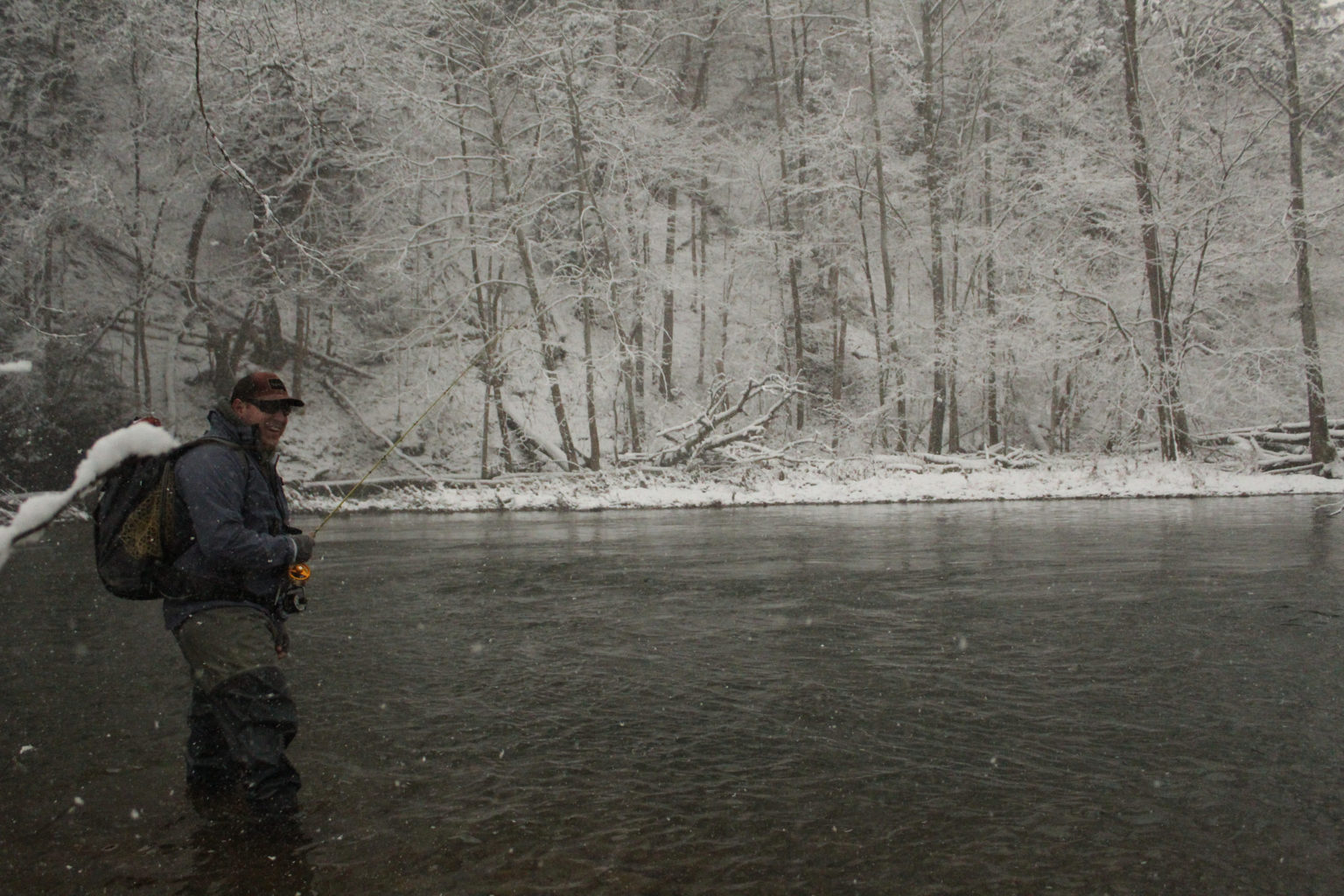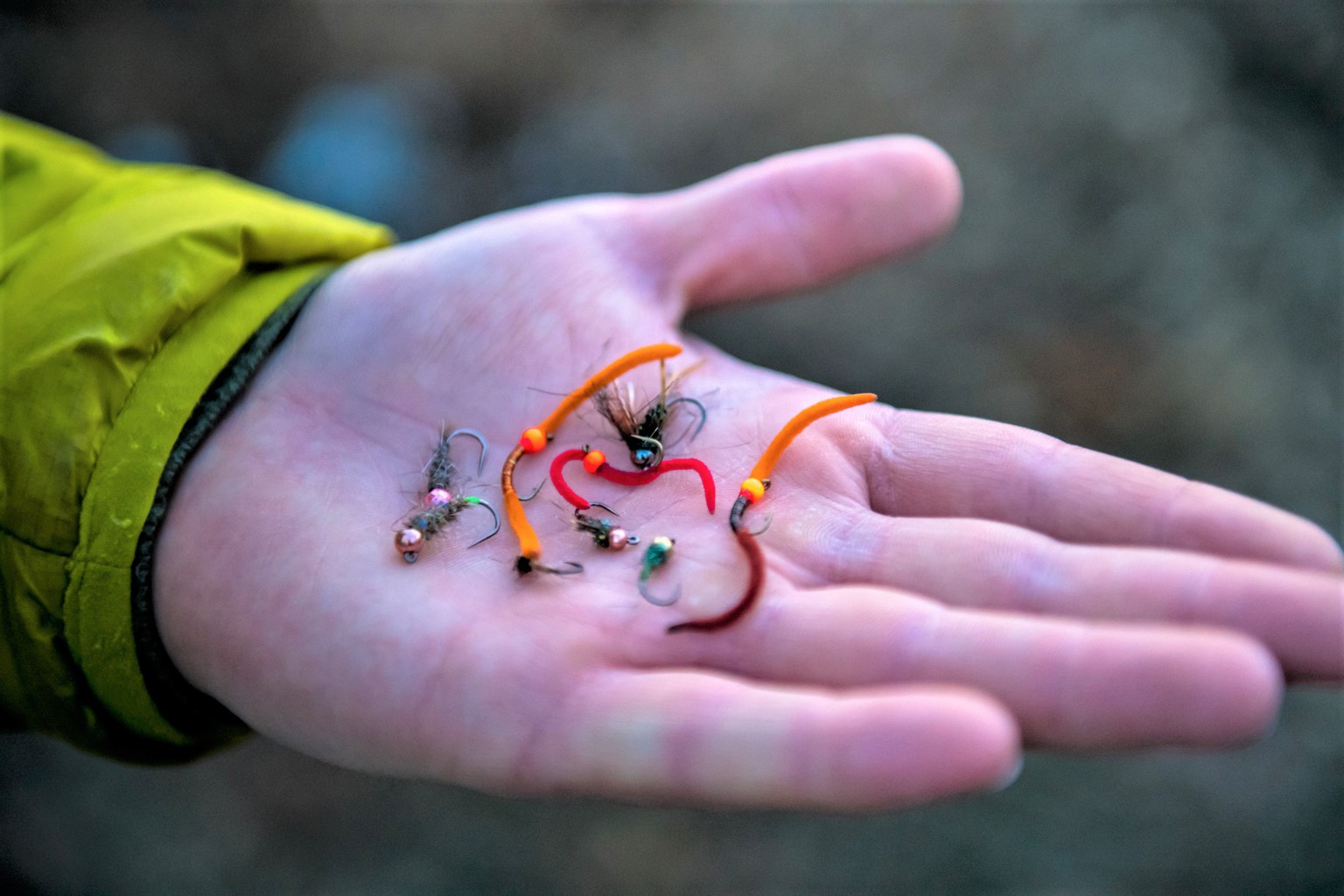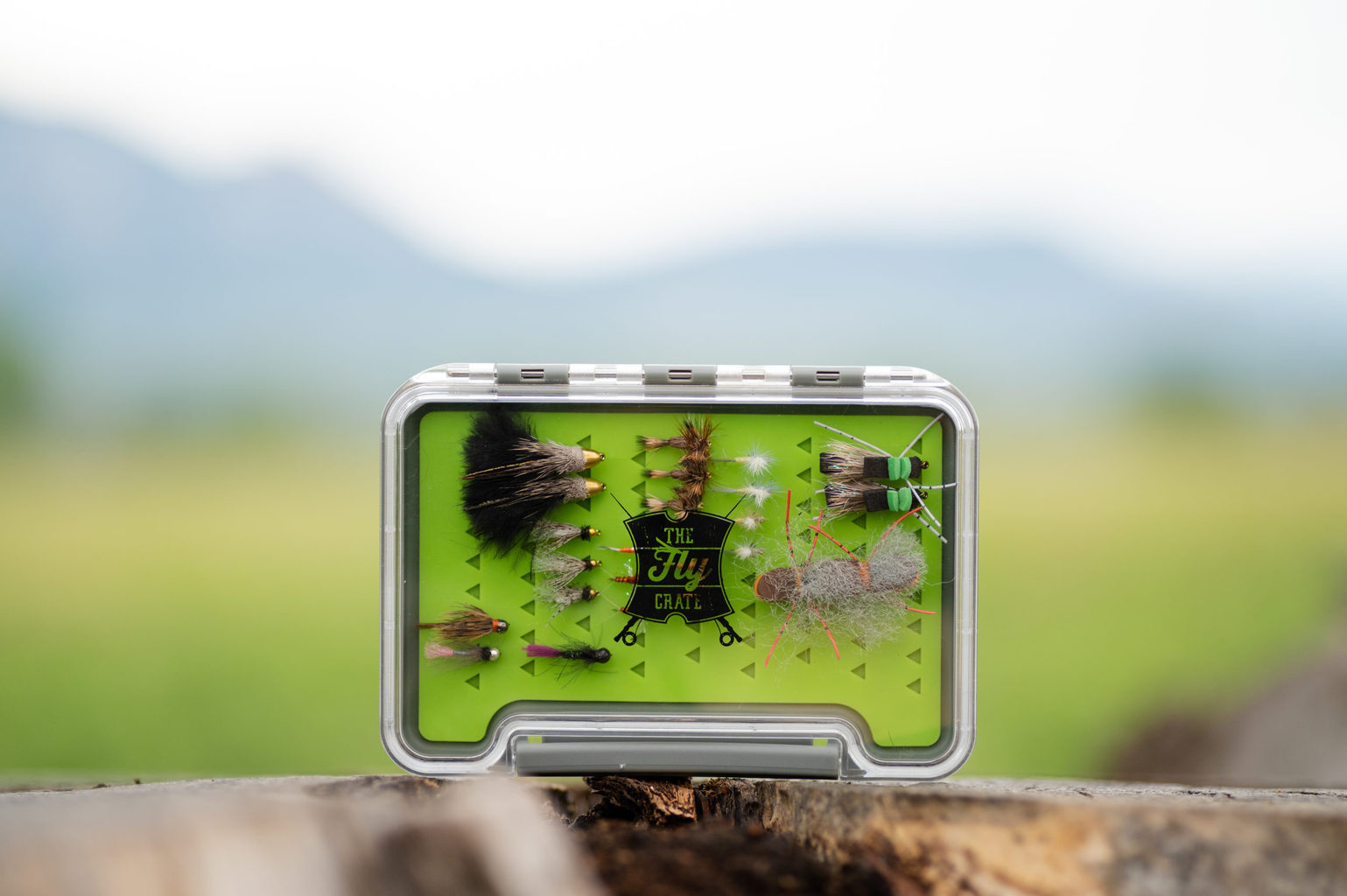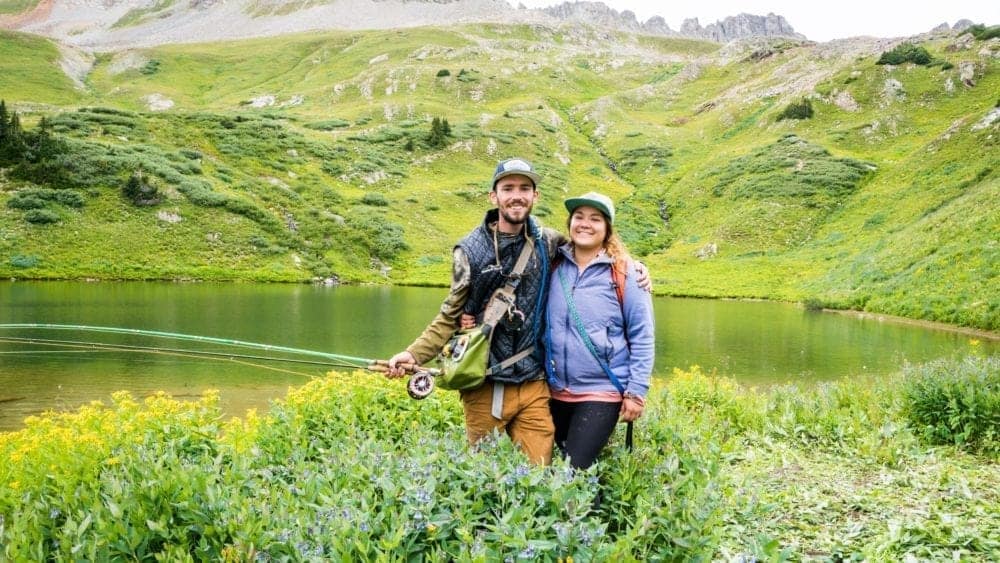The Best Places to Go Fly Fishing in New Mexico
New Mexico offers a wide variety of trout fly fishing experiences for anglers of all levels. From pristine alpine lakes to meandering rivers, this beautiful state is home to numerous species of fish waiting to be caught. Its National Forests offer countless opportunities to fly fish New Mexico and it’s pristine wilderness settings.
Fly anglers can expect to find wild brown trout, rainbow trout, cutthroat trout, and brook trout in the many streams and lakes throughout these protected areas. In addition to the diverse trout species found in New Mexico’s waters, anglers can enjoy the unique landscapes that serve as the backdrop for their fly fishing adventures. Whether casting a line in the clear waters of alpine lakes surrounded by towering pines or navigating the winding rivers that cut through the landscape, fly anglers can immerse themselves in the natural beauty of New Mexico.
Here are the top fly fishing destinations in New Mexico with local tips on how to fly fish along with what flies to use.
Table of contents
Best Places for Fly Fishing New Mexico

Chama River
The Chama River, renowned for its breathtaking scenery and diverse trout populations, provides anglers with a unique fly fishing experience in the heart of New Mexico. As a captivating tributary of the Rio Grande River, the Chama River boasts two distinct sections that cater to fly fishing enthusiasts.
In the upper reaches, the Chama Canyon has a picturesque backdrop for anglers seeking the thrill of catching brown and rainbow trout. Venturing downstream, the lower part of the Chama River is distinguished by its tailwater fishery, which extends below the Abiquiu and El Vado dams.
Its controlled water releases from the dams contribute to a stable environment, ensuring consistent fly fishing opportunities.
For those planning a visit to the Chama River, timing is critical. The optimal periods for fishing this river are during the spring runoff and fall when water levels stabilize. Adapting to the conditions, anglers can employ various techniques, including nymph fishing, dry fly presentations, and streamer tactics. Being versatile in your approach allows for a more dynamic and successful fishing experience, catering to the ever-changing conditions of the Chama River.
The #1 Mapping Resource for Trout Anglers
Over 50,000 trout streams ready for you to explore. Start exploring with the TroutRoutes app today.

Valles Caldera National Preserve
Located in the heart of the Jemez Mountains, the Valles Caldera National Preserve offers a unique high-altitude fly fishing experience. Home to several streams and creeks, this preserve is known for its Rio Grande cutthroat trout population.
The best time to fish Valles Caldera is during the summer months when water levels are more predictable. Bring a variety of attractor dry flies, as well as small nymphs and streamers to entice the native cutthroats.

Jemez River Tributaries
The Jemez River and its tributaries are a popular fly fishing destination in northern New Mexico, offering beautiful scenery and a variety of fish species. The Jemez River flows through the Jemez Mountains, and its tributaries include the East Fork Jemez River, San Antonio Creek, and Rio Cebolla. These waters are home to rainbow, brown, and cutthroat trout, as well as the occasional brook trout.
There are several access points for the Jemez River and its tributaries, such as the Jemez Falls Trailhead, Battleship Rock Picnic Area, and the Rio Cebolla near Seven Springs Fish Hatchery. For San Antonio Creek, access is available at the San Antonio Campground, while the East Fork Jemez River can be accessed at the East Fork Trailhead.
When fly fishing the Jemez River and its tributaries, it is essential to be prepared with a variety of fly patterns. Dry flies like Adams, Elk Hair Caddis, and Royal Wulff are popular choices, while nymphs such as Pheasant Tail, Hare’s Ear, and Prince Nymph can also be effective. Streamers like Woolly Buggers and Muddler Minnows can also be productive, especially in deeper pools and runs.
The best time to fish these waters is during the spring and early summer, as well as in the fall when the water is low and clear. It is essential to be aware of local regulations regarding catch-and-release areas and seasonal closures. Additionally, practice good stream etiquette and leave no trace to preserve these beautiful fishing locations for future generations.
Aztec: Animas River
Aztec, situated near the Animas River, provides a fantastic fly fishing experience with ample opportunities for brown and rainbow trout. The river is accessible year-round, but the optimal time to fish is during the spring and fall when water levels are more favorable.
Navajo: Quality Waters
Navajo is well-known for its Quality Waters on the San Juan River, offering some of the best fly fishing in New Mexico. This tailwater fishery is packed with rainbow and brown trout, with an average size of 16-18 inches. For the best experience, try fly fishing the Texas Hole or the Upper Flats, which are known for their large trout populations.
Whiskey Lake
Whiskey Lake, in the San Pedro Parks Wilderness, provides a high-altitude fishing experience with opportunities to catch cutthroat and rainbow trout. This remote lake is most accessible and fishable during the summer months. Various factors can influence the timing of when it becomes fishable. Typically, in alpine and high-elevation regions like Whiskey Lake, the accessibility is limited during the winter due to heavy snowfall, and the lake may freeze over, making it challenging or impractical for fishing. Therefore, the prime fishing season for Whiskey Lake is usually from late spring to early fall, when the conditions are more favorable for anglers to explore and enjoy this picturesque fishing destination.
Navajo Nation
Fly fishing in the Navajo Nation offers an opportunity to catch fish while in a unique cultural and natural setting. With a permit, anglers can access several lakes and streams that are home to rainbow, brown, and brook trout. The best time to fish is during the spring and fall when water temperatures are ideal.
Gallup: Red Rock Park
Gallup is home to Red Rock Park, a picturesque location offering fly fishing opportunities in the Zuni Mountains. Fishermen can expect to catch well stocked rainbow trout and brown trout in this area. The best times to fish are during spring and fall when water levels are more favorable and the scenery is at its finest.
Navajo Lake State Park
Navajo Lake State Park provides a variety of fishing opportunities, including targeting rainbow and brown trout, as well as kokanee salmon. The tail waters below the dam are excellent spots for large trout. Fall is the best time to target salmon during their spawning run.

San Juan River
The San Juan River is a premier fly fishing destination, offering year-round opportunities for rainbow cutbow and brown trout. Located in the northwest corner of New Mexico, the river is home to a healthy population of trophy-sized rainbow cutbow and brown trout. The river’s consistent flows and abundant insect life create an ideal environment for trout to thrive. The Quality Waters section is particularly famous for its exceptional fishing.
The best time to fish the San Juan River is during the spring and fall when water levels are stable, and the fish are more active. The river is famous for its tiny midge hatches, so make sure to bring small flies in sizes 22 to 28.
For the best wading experience, try your luck in the Texas Hole or the Upper Flats, known for their large trout populations. In addition to wading opportunities, guided float trips on the San Juan River enhance the fishing experience. Professional guides are well-versed in the river’s nuances and can navigate anglers to prime locations, ensuring a fruitful and enjoyable adventure. Floating down the river allows anglers to cover more water and access areas that might be challenging to reach by foot, maximizing the potential for hooking into trophy trout. Whether wading in the productive Texas Hole and Upper Flats or embarking on a guided float trip, anglers on the San Juan River are treated to a world-class fly fishing experience. The combination of stunning scenery, diverse trout species, and the expertise of local guides makes this New Mexico river a must-visit destination for those seeking both challenge and reward in their angling pursuits.

Pecos River
The Pecos River, which originates in the Sangre de Cristo Mountains, provides excellent fly fishing opportunities for brown and rainbow trout. The river flows through the stunning Pecos Wilderness, offering a perfect blend of natural beauty and fishing adventure. Fishing is best from late spring to early fall when water temperatures are conducive to trout activity. Dry flies, nymphs, and streamers can all be effective, so be prepared to switch up your tactics based on the conditions.
Rio Mora River
The Rio Mora River feeds into the Pecos and offers a unique fly fishing experience in New Mexico. With a healthy population of brown trout and regularly stocked rainbows, the Mora River provides excellent fishing opportunities. Additionally, its smaller tributaries are home to the elusive Rio Grande cutthroat trout, making this area a must-visit destination for anglers seeking solitude and the chance to target this native species.
Fishing the Mora River: The Mora River is best fished in the last half-mile upstream of its confluence with the Pecos River. This section is stocked with rainbow trout and also holds a good population of wild brown trout. The fishing is productive before spring runoff, and then picks up again after the waters recede, continuing to be good throughout the summer and into the fall.
For those seeking the opportunity to catch the native Rio Grande cutthroat trout, the smaller tributaries that form the Mora River offer a more secluded fishing experience. These streams may require more effort to access, but the reward of targeting this unique species in their native habitat is well worth the effort.
Cow Creek
Cow Creek is another significant tributary of the Pecos River. However, it has limited public access, except for the private stretch offered by The Bar X Bar Ranch. Similar to the Mora River, Cow Creek fishes well before spring runoff and then picks up again after the waters recede, providing consistent fishing throughout the summer and fall.
When fishing the Mora River and its tributaries, be prepared with a variety of fly patterns. Streamers like the Woolly Bugger work well for brown and rainbow trout, while dry flies such as Parachute Adams and Elk Hair Caddis can be effective during hatch periods. For targeting Rio Grande cutthroat trout, consider using smaller dry flies and nymphs that imitate what’s hatching.
Remember to check local regulations and practice catch-and-release, especially when targeting the native Rio Grande cutthroat trout. By doing so, you’ll help preserve this unique fishery for future generations to enjoy.
Red River
The Red River, a tributary of the Rio Grande, is known for its vibrant colors and excellent trout fishing. Flowing through the Carson National Forest, the river offers picturesque landscapes, diverse trout rivers and healthy populations of rainbow, brown, and Rio Grande cutthroat trout.
The Red River can be fished year-round, but the best fishing occurs from spring through fall. Be prepared with a selection of dry flies, nymphs, and streamers to match the local insect hatches.
Fly Fishing Made Easy 👍
Our Quarterly Fly Club ships 1,000’s of flies to anglers all across the United States. Receive curated fly assortments selected for the season with in-depth articles on how to fish them. Great for beginners to learn and for intermediates to discover new flies.

Rio Grande
The Rio Grande, one of the most iconic rivers in the United States, flows through New Mexico, offering stunning views and exceptional angling opportunities. With fishable trout waters spanning from north of Espanola to the Colorado border, the Rio Grande is home to fewer but larger wild fish, including brown, Rio Grande cutthroats, and rainbow trout.
The Embudo section of the Rio Grande River offers a scenic fly fishing retreat. The picturesque canyon and flowing river provide an idyllic setting for anglers targeting rainbow and brown trout. The best times to fish are during the spring and fall when water levels are more favorable.
The optimal period for targeting trout on the Rio Grande is in the early spring before the waters rise and become cloudy due to the spring runoff, and once more during the early autumn when the waters clear up, and brown trout are gearing up to spawn. Expect an impressive caddis hatch that typically kicks off around Mother’s Day and continues for a few weeks. Carry a variety of caddis imitations, nymphs, and streamers to increase your likelihood of a successful catch.

Heron Lake
Heron Lake, a picturesque reservoir in northern New Mexico, offers excellent fly fishing for rainbow and brown trout. The serene beauty of the lake at sunrise creates a peaceful environment for a day of fishing. Spring and fall are the best times to visit, as water temperatures are ideal for trout.
The Cimarron River
The Cimarron River, located in northeastern New Mexico, is a stunning and picturesque fly fishing destination. Renowned for its trout population, the river is home to a healthy mix of brown and rainbow trout. The best sections for fly fishing are those that flow through the Cimarron Canyon State Park and the Colin Neblett Wildlife Area.
The ideal time to fish the Cimarron River is during the summer months when the water is clear and the trout are actively feeding. The river is known for its prolific hatches of mayflies, caddisflies, and stoneflies, so be sure to have a variety of patterns in your fly box. In addition to dry flies, nymphs and small streamers can also be productive. To increase your chances of success, focus on the deeper pools and runs, as well as the undercut banks where trout often hold.
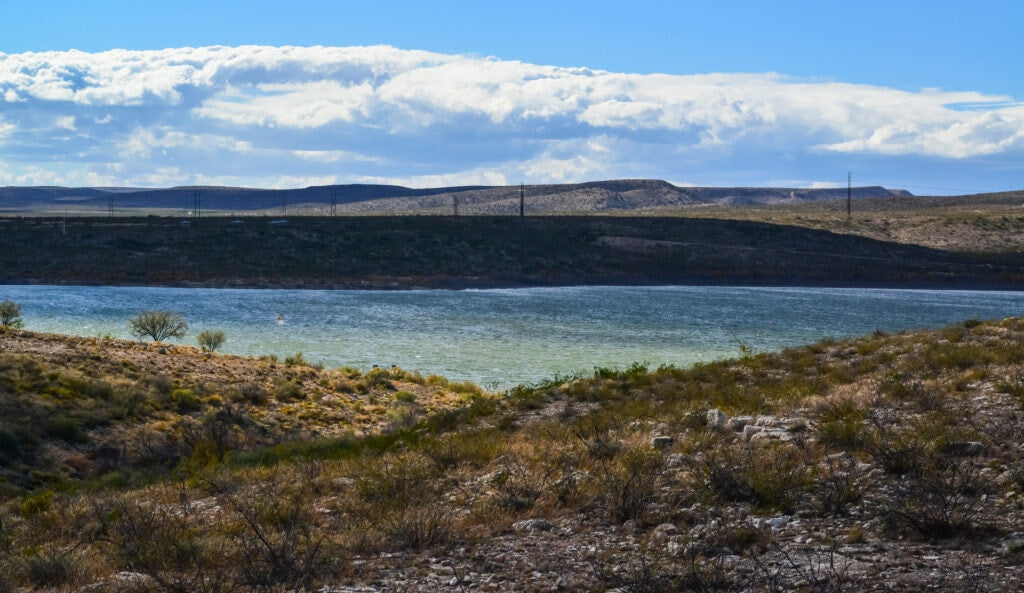
Brantley Lake
Brantley Lake, located in southeastern New Mexico, is a desert oasis offering fly fishing opportunities for largemouth bass, white bass, and channel catfish. The best time to fish is during the spring and fall when water temperatures are more favorable for these species.
Three Lakes along I-40: A Trio of Fishing Opportunities
- Ute Lake State Park: Ute Lake, a large reservoir located along I-40, provides excellent fly fishing for walleye, smallmouth bass, and crappie. The best time to fish is during the spring and fall when water temperatures are more favorable for these species.
- Conchas Lake State Park: Conchas Lake, another I-40 gem, offers fly fishing opportunities for largemouth bass, smallmouth bass, and walleye. The lake’s numerous coves and rocky shorelines make it an ideal location for casting flies. Spring and fall are the best times to fish, with water temperatures optimal for these species.
- Santa Rosa Lake State Park: Santa Rosa Lake, situated along I-40, is a great destination for fly fishing enthusiasts targeting walleye, smallmouth bass, and catfish. The rocky shoreline and clear waters make for an enjoyable fishing experience. Spring and fall are the optimal times to fish due to favorable water temperatures.
Clayton Lake
Clayton Lake in northeastern New Mexico offers diverse fly fishing opportunities, catering to various fish species. While rainbow trout, walleye, largemouth bass, catfish, and bluegill populate the lake, the abundance of rainbow trout makes it a noteworthy destination for trout fishing enthusiasts.
Trout fishing at Clayton Lake is particularly appealing, given the serene surroundings and clear waters. The lake is regularly stocked with rainbow trout, enhancing the chances of a rewarding fishing experience. The calm waters of Clayton Lake create an environment conducive to trout, and anglers often find success in targeting these vibrant and aggressive fish. However, it’s essential to consider the seasonal variations and temperatures, as trout tend to be more active in more excellent conditions.
Spring and fall are generally favorable seasons for trout fishing, while warmer summer months might increase activity among warm-water species like largemouth bass and catfish. If you enjoy the challenge of trout fishing and the tranquil ambiance of a clear mountain lake, focusing on rainbow trout at Clayton Lake can be a rewarding experience. It’s recommended to check with local authorities or fishing reports for updated information on stocking schedules, fishing regulations, and any specific recommendations for the time of year you plan to visit.
Eagle Nest Lake State Park
Nestled in the picturesque Moreno Valley, Eagle Nest State Park is a high-altitude fishing destination situated at over 8,000 feet above sea level. Surrounded by the stunning Sangre de Cristo Mountains, the park offers anglers a serene and scenic location to cast their lines. The 2,400-acre lake is home to a variety of fish species, including rainbow trout, brown trout, kokanee salmon, and yellow perch.
The prime time to fish Eagle Nest Lake is during the summer months when the weather is warm and the fish are active. Due to the lake’s high altitude, it’s important to be prepared for rapidly changing weather conditions. Targeting fish from a float tube or a small watercraft can also produce results. Be sure to have a selection of streamers, nymphs, and dry flies that imitate local aquatic insects. Using a dry fly dropper rig is a common tactic for fishing dry flies on the surface while suspending a nymphing rig down below. Usually, larger dry flies are best suited for dropper-rigs such as an Amy’s Ant or Chubby Chernobyl.
Fly Fishing Made Easy 👍
Our Quarterly Fly Club ships 1,000’s of flies to anglers all across the United States. Receive curated fly assortments selected for the season with in-depth articles on how to fish them. Great for beginners to learn and for intermediates to discover new flies.

Gila River
The Gila River, located in southwestern New Mexico, offers a remote and rugged fly fishing experience for those seeking solitude and pristine wilderness. Flowing through the heart of the Gila National Forest and the Gila Wilderness, the river provides a stunning backdrop for an unforgettable first fishing trip and adventure. The Gila River is home to a variety of fish species, including rainbow trout, brown, and native Gila trout, which is a rare and protected species.
The best time to fish the Gila River is during the spring and fall months when water levels are more stable and the temperatures are cooler. Be prepared for a challenging hike to reach the river, as access can be difficult in this remote wilderness. Pack in all your gear, and make sure to have a map and a compass or GPS device for navigation. When fly fishing, use nymphs, dry flies, and streamers that imitate local insect life, such as mayflies, caddisflies, and stoneflies. To increase your chances of success, focus on deeper pools and runs, as well as areas where tributaries enter the main river. Be mindful of the protected Gila trout; if you happen to catch one, release it immediately to ensure the species’ continued survival.
Costilla Creek
Costilla Creek, situated in northern New Mexico near the Colorado border, offers a high-altitude fly fishing experience in a pristine alpine environment. Surrounded by dense forests and rugged mountain peaks, Costilla Creek is a hidden gem that provides the perfect setting for a peaceful and secluded fly fishing trip. The creek is home to a healthy population of Rio Grande cutthroat trout, New Mexico’s state fish, as well as brown and rainbow trout.
The ideal time to fish Costilla Creek is from late spring through early fall, as the high-altitude location can lead to cold water temperatures and late snowmelt in the early season. Make sure to have a variety of dry flies, nymphs, and streamers that imitate the local insect life, such as mayflies, caddisflies, and stoneflies. Focus on deeper pools, runs, and undercut banks where trout are likely to be holding. Remember that the Rio Grande cutthroat trout is a sensitive species, so practice catch-and-release to help preserve their population. In addition, be prepared for changing weather conditions and pack appropriate clothing for a high-altitude environment.
Best Flies For New Mexico
In New Mexico, there are many noteworthy hatches including the Blue-winged Olives (BWOs), Pale Morning Duns (PMDs), and Green Drakes dominating spring and early summer, bringing trout to the surface.
Notable rivers for specific hatches include the San Juan River, Rio Grande, and Chama River for Green Drakes.
For Blue-winged Olives (BWOs), the Cimarron River, Red River, San Juan River, and Rio Chama are famous.
Pale Morning Duns (PMDs) are prominent in Rio Grande, Rio Chama, Pecos, and Cimarron.
Tricos are often seen in the morning on rivers like the San Juan and Rio Grande. The best times for these hatches generally range from late morning to early afternoon.
You can expect Caddisflies throughout warmer months Caddisflies in New Mexico are generally prevalent in the spring and summer months. The exact timing can vary depending on location, elevation, and local climate conditions. Anglers often encounter significant caddisfly hatches during this period, attracting trout to the surface. The San Juan River, Rio Grande, and Cimarron River experience noteworthy caddisfly activity, providing opportunities for fly fishing enthusiasts. It’s advisable to check local fishing reports and consult with experienced anglers for more specific and current information on caddisfly hatches in the region.
Significant stonefly hatches, featuring Salmonflies and Golden Stoneflies, occur in early to mid-summer. Generally, anglers can anticipate stonefly activity in June and July. When targeting these stonefly hatches, anglers should pay attention to water temperatures, as stoneflies are more active in warmer conditions. Additionally, understanding the life cycle of stoneflies and their preferences for specific habitats, such as rocky areas and fast-flowing waters, can enhance the chances of a successful fishing experience.
Year-round players, midges of various sizes and colors, especially in winter, play a crucial role when other insect activity diminishes. I typically fish a scintilla midge in olive or brown, mimicking the natural midges that hatch year-round in the water. The sizes can vary between 22 and 30, depending on how picky the fish are. You also will not go wrong with a zebra midge in sizes 22-24,
Summer introduces terrestrials, non-aquatic insects like grasshoppers, ants, and beetles, inadvertently falling into the water and becoming essential targets as trout actively feed on them. It’s always a good idea to have a few terrestrial patterns to target the banks, that’s where you’ll have the best success.
A curated assortment of flies tailored to seasonal trout habits is essential to optimize success in New Mexico’s dynamic waters. This strategic approach can be a game-changer for anglers of all skill levels. The versatile Parachute Adams takes center stage, ideally suited for enticing trout during the lively Blue-winged Olive (BWO) and Pale Morning Dun (PMD) hatches in spring and early summer. For year-round caddisfly activity, the Elk Hair Caddis emerges as a buoyant dry fly, capturing the essence of adult caddisflies in various sizes and colors.
Crafted to mirror substantial stoneflies during noteworthy early to mid-summer stonefly hatches, Salmonfly Patterns offer an excellent option for anglers targeting larger catches.
Transitioning below the surface, the Zebra Midge stands out as a reliable choice throughout the year, flawlessly emulating midge larvae in various sizes and colors. As summer progresses, Hopper Patterns become indispensable, imitating clumsy terrestrials inadvertently falling into the water and triggering feeding frenzies among trout. With its slender profile, the classic Pheasant Tail Nymph proves effective year-round for imitating mayfly and stonefly nymphs. Completing the toolkit, the flashy Copper John is a go-to attractor nymph, excelling in enticing trout beneath the surface during various insect hatches.
Top 10 Flies For Fly Fishing New Mexico

Adams Parachute
The Adams Parachute is a great mayfly pattern that imitates practically every mayfly hatch you’ll find in New Mexico. I typically like to fish a size #16 during the afternoon hatches when I start to see BWOs hatching or I fish a size #14 when I’m prospecting new water. Plus, it’s a good option for dry-dropper rigs where I drop a smaller emerger or midge pattern 12-inches below.
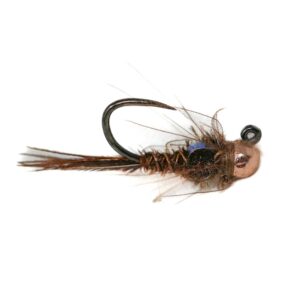
Flash Back Pheasant Tail
This pattern is particularly effective during mayfly and stonefly hatches, where trout focus on emerging or drifting nymphs. I like to fish sizes #14-#18 just depending on the water quality. This is a staple in my fly box and will run perfectly as a dry dropper rig or a tandem nymph rig year-round.

Copper John
The Copper John remains effective throughout the year, but my preference is to utilize this pattern, especially during the colder months. Typically, I reach for this fly around October to enjoy its success in enticing trout to bite. I will fish this in sizes ranging from #14-#18 and in colors Copper, Red, Black, and chartreuse.
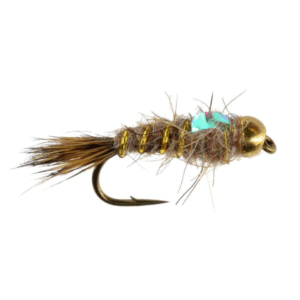
Hares Ear
The Hare’s Ear nymph’s lifelike appearance renders it a reliable option throughout the year, especially when mimicking mayfly and stonefly nymphs. It becomes an indispensable choice when trout are particularly selective and seem unresponsive to other offerings. I recommend always using a bead head with this fly to ensure a faster sink, reaching those discerning eaters in the depths.

BWO Nymph
The BWO Nymph is a crucial pattern, especially during the Blue-Winged Olive hatches. This versatile nymph imitates the aquatic life stage of the BWO mayfly, a prevalent and essential food source for trout in New Mexico. When the hatch is on, I prefer presenting a BWO Nymph in various sizes, typically from #18 to #22, to match the natural insects. Its effectiveness is heightened when it drifts near the riverbed, mimicking the emerging nymphs ascending toward the water’s surface.

Elk Hair Caddis
The Elk Hair Caddis stands out as an indispensable dry fly pattern in the diverse fly fishing landscape of New Mexico. Its significance stems from the year-round caddis hatches on various bodies of water, with notable occurrences on the renowned San Juan River, Jemez, Pecos, Cimmeron, and Costilla. I recommend sizes ranging from #14 to #18 when using this pattern. This fly becomes particularly prominent during the spring, aligning with the peak of hatches across the state, ensuring it remains a top performer for us anglers seeking success on New Mexico’s dynamic waters.
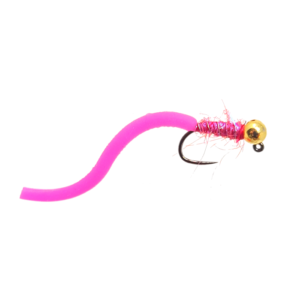
Annelids
These fly patterns demonstrate exceptional effectiveness, especially in calm lake settings and unhurried stretches of river, replicating scenarios where trout commonly encounter worms in the riverbed. To optimize your chances, I recommend using a Daiichi 1870 Swimming Nymph hook in sizes #12 to #14, making sure that it matches the prevalent worm sizes in your target waters.
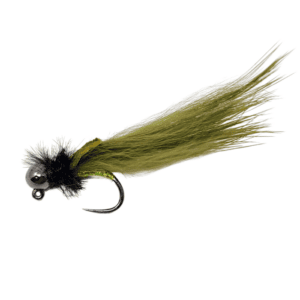
Leech Patterns
These patterns prove highly effective just before the onset of spring or fall when trout are actively preparing for the spawning season. Recognizing the energy demands associated with spawning, trout seek larger meals with higher caloric content during this period. My preferred patterns for such occasions include the Mares Mini Leech, various Pine Squirrel Leeches, and Jig Leeches. Optimal color choices in size #18 are brown and black.

Hoppers
I really appreciate the hopper pattern, utilizing it consistently even into winter when fish no longer focus on giant bugs at the surface. It serves well in dry-dropper rigs and as an effective attractor dry fly. Optimal sizes for my approach range from #10 to #14, with a preference for the Morrish Hopper in tan or purple, given its versatility and proven effectiveness.

Griffiths Gnat
The Griffith’s Gnat is a go-to fly pattern, especially during midge hatches or when small insects are prevalent on the water. It’s an excellent choice for imitating clusters of midges, providing a realistic and enticing presentation to trout. I recommend fishing this pattern in smaller sizes, typically #18 to #22, to match the natural size of midges commonly found in New Mexico waters.
What Fly Fishing Rod Should I Bring?
Selecting a 5-weight fly rod proves to be the optimal choice for various fishing situations in New Mexico. The versatility of a 5-weight rod strikes a perfect balance, making it well-suited for the diverse fly fishing environments the state offers.
Whether casting delicate dry flies during Mayfly hatches, presenting nymphs in swift river currents, or tackling larger trout in alpine lakes, the 5-weight provides the necessary backbone and finesse. Its moderate power allows for delicate presentations in more technical situations while offering the strength to handle larger fish.
In rivers like Chama or the serene lakes of Valles Caldera, where diverse trout species abound, the 5-weight’s adaptability ensures that anglers are well-equipped for any encounter. Moreover, when targeting elusive species like Rio Grande cutthroat trout in more secluded areas, the 5-weight’s balance of sensitivity and power becomes invaluable. In essence, the 5-weight fly rod emerges as the go-to choice, providing the angler with the versatility required to thrive in the varied fly fishing landscapes of New Mexico.

How Much Is A New Mexico Fishing License?
In New Mexico, fishing licenses are available for both residents and non-residents. As of the latest information, an annual fishing license for residents is priced at $25, while non-residents can obtain the same for $56. The New Mexico Department of Game and Fish also provides shorter-term options, including a one-day license for $12 and a five-day license for $24. Please note that these details are subject to change, and it’s advisable to check the official website of the NMDGF for the most current pricing and additional information.
Special Regulations: New Mexico’s Special Chile Waters
Navigating the unique fly fishing landscape of New Mexico comes with the added charm and challenge of fishing in amazing Chile waters, each governed by distinct regulations.
In select areas, anglers must adhere to the “only two barbless flies” rule, adding an extra layer of finesse to their approach. These regulations aim to preserve the delicate balance of aquatic ecosystems while offering anglers an exceptional angling experience. Whether casting into the pristine currents of the Rio Chama or testing one’s skills in the exclusive waters of Valles Caldera, understanding and respecting these special regulations is paramount.
The 5-weight fly rod, with its adaptable nature, seamlessly aligns with these unique challenges, making it the ideal companion for anglers seeking success in New Mexico’s extraordinary and carefully regulated Chile waters.
New Mexico boasts a collection of Special Chile Waters that beckon fly anglers with their unique challenges and regulations. These exclusive waters add an extra dimension to the fly fishing experience in the state. Here’s a list of some of the noteworthy special chile waters in New Mexico:
Rio Chama: This iconic river is known for its pristine currents and is subject to specific regulations, including the “only 2 barbless flies” rule.
Valles Caldera: A picturesque destination with serene lakes, Valles Caldera features special regulations to maintain the ecological balance, providing a distinctive angling encounter.
Cimarron River: Renowned for its breathtaking scenery, the Cimarron River is a particular Chile waterway with regulations tailored to preserve its unique ecosystem.
Red River: This vibrant watercourse is teeming with trout and subject to specific rules, enhancing the challenge for fly anglers.
San Juan River: Offering some of the best trout fishing in the region, the San Juan River’s special regulations contribute to the conservation efforts of this prized fishery.
Pecos River: With its diverse landscapes, it is home to Special Chile Waters where regulations aim to protect its rich biodiversity.
Jemez River: Nestled in the Jemez Mountains, this river is subject to unique regulations, providing a distinctive fly fishing experience for those seeking trout in its clear waters.
Each of these special chile waters presents a unique opportunity for anglers to connect with nature and engage in fly fishing while respecting and upholding the specific regulations designed to preserve these pristine environments.
In conclusion, New Mexico is an unparalleled haven for fly fishing enthusiasts, offering diverse angling experiences in pristine waters. From the captivating Chama River to the secluded Gila River, anglers can explore a variety of landscapes while targeting multiple trout species. A nuanced understanding of aquatic insect hatches adds a strategic dimension to fly fishing, allowing anglers to tailor their approaches to shifting seasons. Armed with a meticulously curated selection of flies, ranging from the iconic Parachute Adams to the versatile Zebra Midge, anglers can navigate the multifaceted ecosystems of the state, creating enduring memories in its untamed wilderness. Whether pursuing the exhilaration of trophy-sized catches or seeking tranquility in unspoiled natural landscapes, fly fishing in New Mexico promises memorable adventures for anglers of all skill levels. Pack your gear, secure your favored flies, and fully immerse yourself in the unparalleled beauty and challenges defining fly fishing in New Mexico’s enchanting landscapes.
Fly Fishing Made Easy 👍
Our Quarterly Fly Club ships 1,000’s of flies to anglers all across the United States. Receive curated fly assortments selected for the season with in-depth articles on how to fish them. Great for beginners to learn and for intermediates to discover new flies.




